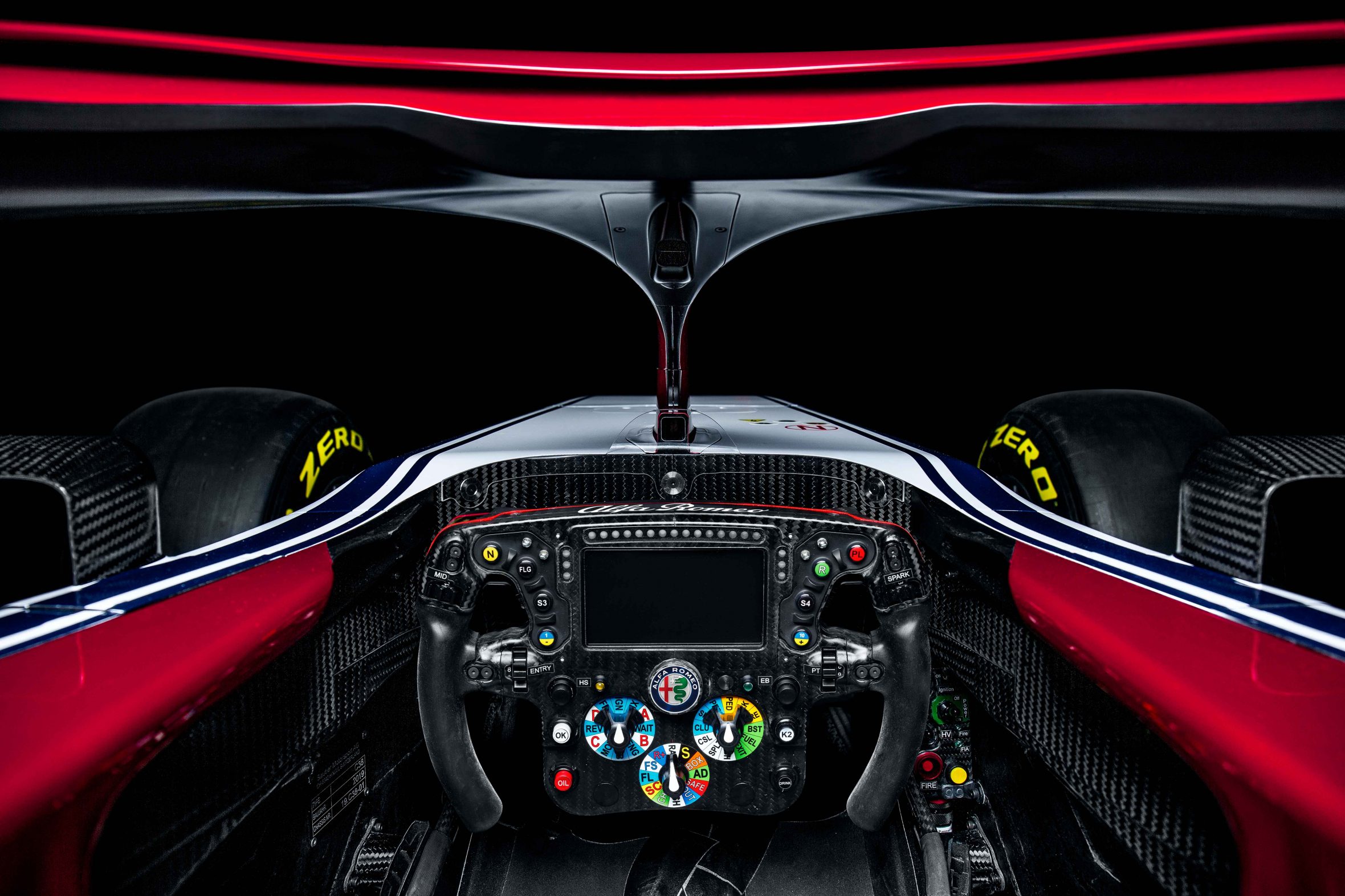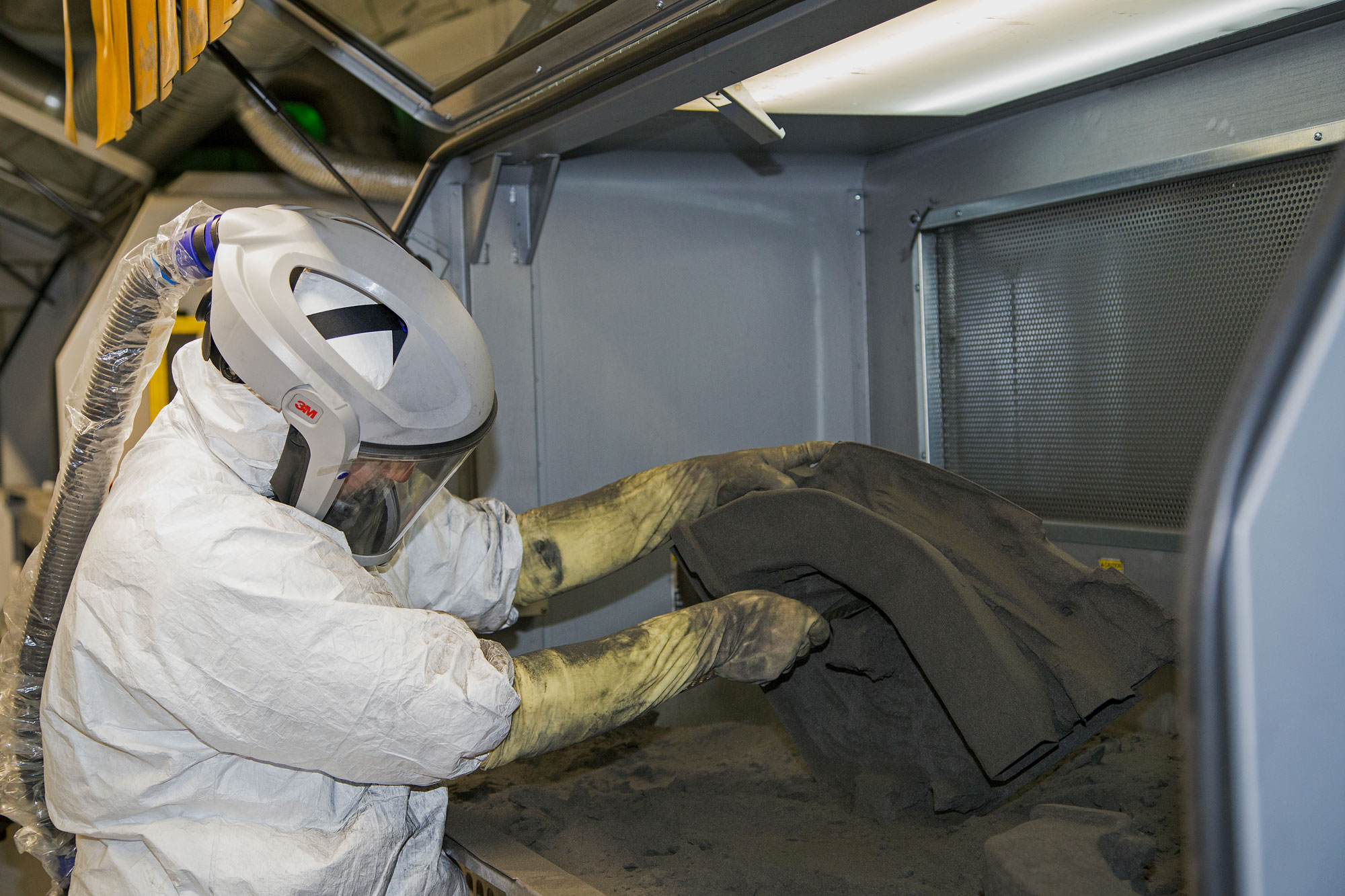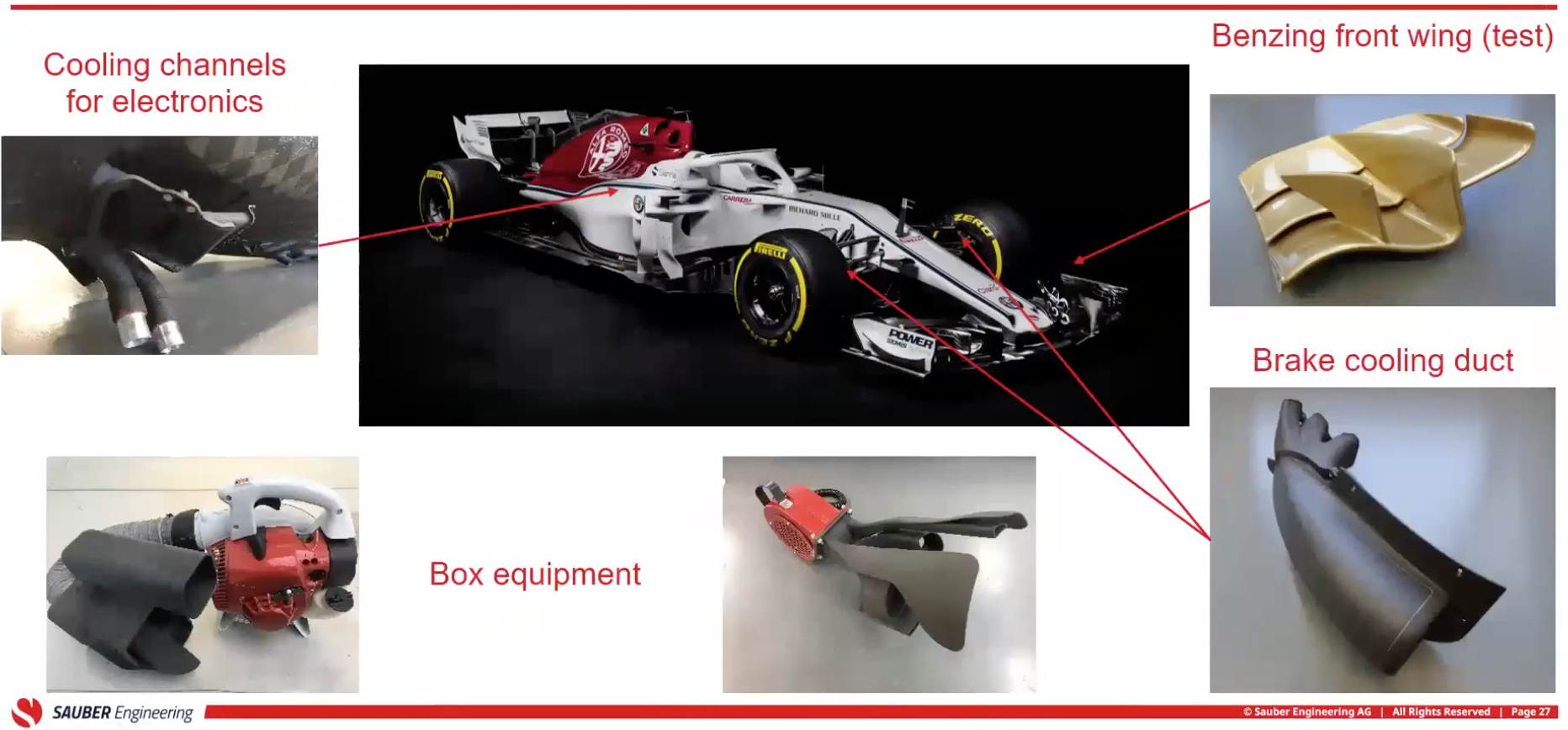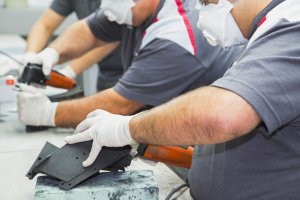 Twelve races down for the first half of the 2019 season, and Alfa Romeo’s Sauber Formula One (F1) team is good to go for the remaining nine races of the year, with both, lead driver Kimi Raikkonen, and Alfa Romeo ranking within the top ten drivers and teams on the scoreboard. Car and driver were considered to be brilliant during the last race, the Hungarian Grand Prix, after which the experienced F1 driver said: “the car behaved great”. Of course, the results in F1 are a combination of both man and machine, but the machines show off the dedicated work of engineering and mechanical masterminds, pushing the boundaries of speed, power, technology, and innovation. For Sauber Motorsport AG (the company operating the Alfa Romeo Sauber F1
Twelve races down for the first half of the 2019 season, and Alfa Romeo’s Sauber Formula One (F1) team is good to go for the remaining nine races of the year, with both, lead driver Kimi Raikkonen, and Alfa Romeo ranking within the top ten drivers and teams on the scoreboard. Car and driver were considered to be brilliant during the last race, the Hungarian Grand Prix, after which the experienced F1 driver said: “the car behaved great”. Of course, the results in F1 are a combination of both man and machine, but the machines show off the dedicated work of engineering and mechanical masterminds, pushing the boundaries of speed, power, technology, and innovation. For Sauber Motorsport AG (the company operating the Alfa Romeo Sauber F1  Team), additive manufacturing (AM) has played a huge role in the last decades and is considered a pioneer in AM, designing and producing components in 3D printers to enable formal constructions that are not possible by means of conventional methods such as milling, turning or casting. Sauber has been using 3D Systems machines for over 10 years and in 2018 incorporated five new 3D Systems ProX 800 SLA 3D printers at its headquarters and engineering facilities in Hinwil, Switzerland.
Team), additive manufacturing (AM) has played a huge role in the last decades and is considered a pioneer in AM, designing and producing components in 3D printers to enable formal constructions that are not possible by means of conventional methods such as milling, turning or casting. Sauber has been using 3D Systems machines for over 10 years and in 2018 incorporated five new 3D Systems ProX 800 SLA 3D printers at its headquarters and engineering facilities in Hinwil, Switzerland.
Recently, 3D Systems and Alfa Romeo Racing teamed up for a webinar to overview the 3D printing company Selective Laser Sintering (SLS) product offering as well as some context around how they are suited to a production environment and the advantages that it can bring, particularly in the automotive arena of cutting edge Alfa Romeo Sauber F1. Claiming that SLS technology moves beyond the creation of design prototypes, making production parts with very high precision, durability and reliable repeatability at low overall operating costs. The experts, Richard Broad, 3D Systems Director of Applications Engineering for Europe, the Middle East and Africa (EMEA) and India, along with Marco Gehrig, Head of Additive Manufacturing at Sauber Engineering, explained how SLS technology is used effectively in the automotive sector.
“From a materials development perspective, the aim at 3D Systems is to produce materials that not only improve what is currently possible from a mechanical performance and part quality angle, but we also look into niche applications where specific properties can open up new possibilities,” said Broad.
3D Systems is a pioneer in additive manufacturing. Co-founded by the inventor of 3D printing, Charles Hull, 3D Systems has grown into a global 3D solutions company. Since the first Stereolithography machine (SLA) in 1983, the company has grown to incorporate a wide range of platforms, materials, software, and hardware, as well as on-demand manufacturing services.
Alfa Romeo F1 now uses the SLS platforms to stay at the cutting edge of the automotive sector. Even though Alfa Romeo has competed in motor racing as both a constructor and engine supplier on and off since 1950, it returned to the sport as their own team while being operated by Sauber Motorsport AG. Sauber Engineering has been testing out AM since 1995 with external suppliers, but in 2007 they began their own in-house production to reduce the lead time. One year later, due to the increasing demand for AM parts, the production levels had to be constantly upgraded and right now they are running thirteen 3D Systems SLS and SLA printers, including four 3D Systems S Pro 140 units and two 3D Systems S Pro 230 units. All of them operating 24/7 to supply the increasing demand of the F1 car as well as other projects the company is engaged in.
SLS is mainly used for the aerodynamic development of the Alfa Romeo F1 car in the wind tunnel, as well as a wide variety of laminating molds, cores, and complex serial parts. During production, they use a powder-based material developed by Sauber Engineering: carbon-reinforced polyamide or HiPAC, which is used when particularly light and rigid components are required, from F1 brake ventilation and body components for pre-production vehicles and prototypes to a wide range of ready-to-use construction elements.
Broad claims that SLS is very well suited for demanding applications in the automotive sector, making 3D production a reality with shorter product development cycles, functional prototypes that meet requirements (like heat, strength, precision and mechanics), small series, and tool-free production of quality parts equivalent to injection molded parts.
“The shorter product development cycles avoid the need for costly new stakes in the product design process, allows to build multiple iterations to test the design in a very short time scale, with more robust product development time scales and product development designs which avoids the costly mistakes when going into the production phase,” Broad suggested.
He went on to say that “the platforms offer quality and repeatability and diversification from traditional part creation methods such as injection moulding or CNC. One of the advantages of AM is the ability to increase the freedom of design, without any restraints around the common traditional production or machining methods used. And that is what gives us the ability to add lightness into parts by removing unnecessary materials, also allowing consolidation and assembly of parts into one component and simplifying design, changing and tweaking them as frequently as required to the extent of mass customization.”
The development departments of the F1 teams were among the first to experiment with AM and to explore the dimensions of the technology. To them, the additive process is comparatively fast and cost-effective, which are two key factors for success in F1 so they can deliver efficient development of new components and immediate production. Sauber Engineering works in partnership with leading manufacturers of equipment for 3D metal printing and 3D plastic-based printing processes. In 2018 3D systems even became a promotional partner of the Alfa Romeo Sauber F1 Team.
According to Gehrig, Sauber is printing more than 20,000 SLS parts per year. That includes parts for the Sauber C37 Ferrari (the entire drivetrain of the Alfa Romeo racecar is supplied by Ferrari), parts for the 60% wind tunnel model, as well as many customer projects.
“SLS is very sensitive because of the influence of its surroundings, including moisture, temperature and how you treat the system,” explained Gehrig. “In the past, we faced a few problems due to the weather conditions, during winter we had different material properties than in summer, so we invested a lot in our infrastructures, such as in external laser cooling, a power supply system, and constant conditions for our infrastructure, like temperature, air humidity and for our materials.”
“Today we have our own certified 3D Systems technician in-house so that if something happens with the machines, from maintenance to calibration of lasers, we know he is available on call and won’t have to wait for a service engineer from Germany (where 3D Systems European headquarter is) and that saves a lot of time, especially for F1, where parts have to be done quickly otherwise, the cost is higher than expected,” revealed Gehrig.
Sauber is printing many small parts that go into the race car, from cooling channels for electronics to Benzing front wing, as well as brake cooling ducts, and even box equipment (mainly tools to heat up and cool down the break).
Nothing says custom made like an F1 car, so it’s no wonder the parts it needs follow along that line. According to both Broad and Gehrig, the SLS system is an ideal match for the Sauber team of engineers who need faster part production and shorter assembly turnaround times, as well as part consolidation to reduce assembly work, sources of error, costs and time. In F1, time wasted means the car could be out of the race, and that costs a lot of 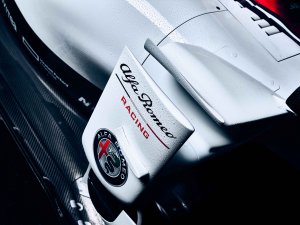 money, it could even cost a race car driver his pole position on the next Grand Prix. An F1 car can cost between 10 to 20 million dollars, and racing along the track at more than 200 miles per hour, the teams want to make sure that they have invested enough in the cars’ technology to get a victory. Earlier this year, Forbes revealed that championship winners spent an annual average of $285.3 million during the year before their victory. That means having 3D printing systems in place is probably a good decision, and in the case of SLS, both experts said the advantage is the increased strain and impact resistance for demanding applications, as well as being able to create different geometries that the car demands to cut weight and size and enhance performance.
money, it could even cost a race car driver his pole position on the next Grand Prix. An F1 car can cost between 10 to 20 million dollars, and racing along the track at more than 200 miles per hour, the teams want to make sure that they have invested enough in the cars’ technology to get a victory. Earlier this year, Forbes revealed that championship winners spent an annual average of $285.3 million during the year before their victory. That means having 3D printing systems in place is probably a good decision, and in the case of SLS, both experts said the advantage is the increased strain and impact resistance for demanding applications, as well as being able to create different geometries that the car demands to cut weight and size and enhance performance.
“The car needs to perform in different weather conditions, so the influence of the brake cooling duct is extremely important, so we try out different shapes that we then test on the track to see which one to add to the car. The aim is always to have the best aerodynamics but also great cooling capacities,” Gehrig went on.
The same goes for the Benzing front wing, which Sauber engineers tested in Barcelona two weeks prior to the start of the season. Each different shape is tested out and after measurements and data analysis, they choose one of the designs, something Gehrig says would be extremely expensive to do without their own 3D printers, enabling the team to perform real tests and fast iterations, production of fewer parts since SLS parts are more resistant to wear and environmental influences, and storage and reproduction of parts and shapes with data that can never deteriorate, get lost in transport or entail high storage costs.
During the webinar, Broad suggested that SLS is one of the few AM processes that gives real ease and that 3D Systems’ main aim is to provide a very user-friendly turn-key solution. Adding that the easy processing in SLS results in:
- More possibilities. As the parts are supported by unsintered powder, no support structures have to be printed, enhancing freedom of design.
- Low working costs. There are no support structures to be removed which save in operating staff and technicians.
- Efficient production. Large series can be quickly printed and easily processed, which makes SLS the best choice for AM on the production floor.
“Freedom of design means that previously impossible geometries can be manufactured in one part and built in a layer by layer process. We can remove the complexity and the need for an assembly and simplify the process resulting in a much more robust and reliable part, a part that is easier to produce and less reliant on sourcing raw materials. Leading to immediate production, as well as the ability to print parts on demand without relying on often costly outcome sourcing services,” Broad claimed.
F1 teams are at the cutting edge of motorsports and what they are doing with materials, platforms and production techniques will find its way very quickly into a standard production environment. The motorsport has the fastest cars in the world, the best drivers, top branding and races at eight of the richest countries in the world, it’s a dream scenario for any sports fan. But beyond that, the advances in auto technology have a big impact on the design and production of cars in general, especially when it comes to safety, reliability, and endurance. This trickle-down effect can benefit a lot of people, not just racers. And the advances provided by 3D printing are a big part of that because they speed up innovation, which means carmakers will imitate them in their mass-manufactured cars, not to mention implementing 3D printing techniques to also help them reduce costs and improve production altogether. In particular, SLS has proven a great match for 3D Systems and Alfa Romeo F1, so we’ll surely hear more in the future about 3D printed parts for the race car.
[Images: Sauber Engineering, 3D Systems]Subscribe to Our Email Newsletter
Stay up-to-date on all the latest news from the 3D printing industry and receive information and offers from third party vendors.
Print Services
Upload your 3D Models and get them printed quickly and efficiently.
You May Also Like
Making 3D Printing Personal: How Faraz Faruqi Is Rethinking Digital Design at MIT CSAIL
What if your 3D printer could think more like an intelligent assistant, able to reason through a design idea, ask questions, and deliver something that works exactly the way the...
Reinventing Reindustrialization: Why NAVWAR Project Manager Spencer Koroly Invented a Made-in-America 3D Printer
It has become virtually impossible to regularly follow additive manufacturing (AM) industry news and not stumble across the term “defense industrial base” (DIB), a concept encompassing all the many diverse...
Heating Up: 3D Systems’ Scott Green Discusses 3D Printing’s Potential in the Data Center Industry
The relentless rise of NVIDIA, the steadily increasing pledges of major private and public investments in national infrastructure projects around the world, and the general cultural obsession with AI have...
Formlabs Teams Up with DMG MORI in Japan
In late June, Nick Graham, Chief Revenue Officer at Formlabs, announced on LinkedIn that the company had partnered with DMG MORI, one of the world’s leading machine tool companies, to...



